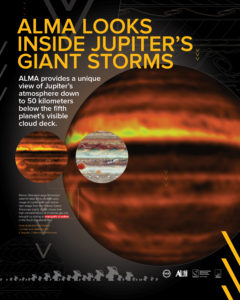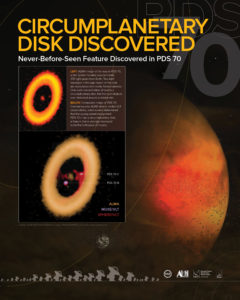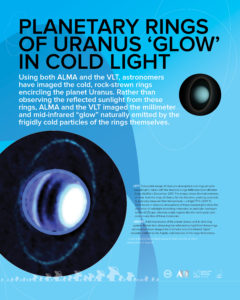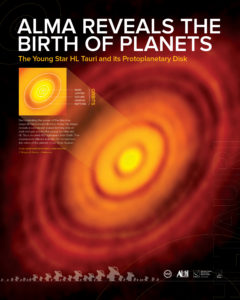Swirling clouds, big colorful belts of sinking gas, and giant storms. What can radio telescopes detect below the visible clouds of Jupiter? What is causing the many storms and eruptions that we see hovering around the planet? The Atacama Large Millimeter/submillimeter Array (ALMA), observing in radio wavelengths, gives us the first view of Jupiter’s atmosphere down to fifty kilometers below the planet’s three different cloud layers, or decks.


Circumplanetary Disk Discovered Poster
Never-before-seen feature discovered in PDS 70

Salt Discovered Around Massive Young Star poster
ALMA has detected sodium chloride emanating from the dusty disk surrounding ORION SOURCE I

Star Formation Across the Universe Poster
Physics at High Angular resolution in Nearby Galaxies survey studies Star-Forming clouds in disk galaxies

Planetary rings of Uranus Poster
Using both ALMA and the VLT, astronomers have imaged the cold, rock-strewn rings encircling the planet Uranus. Rather than observing the reflected sunlight from these rings, ALMA and the VLT imaged the millimeter and mid-infrared “glow” naturally emitted by the frigidly cold particles of the rings themselves.

HL Tau – ALMA Reveals the Birth of Planets Poster
Demonstrating the power of the Atacama Large Millimeter/submillimeter Array, this image reveals a spectacular planet-forming disk of dust and gas around the young Sun-like star HL Tauri, located 450 light-years from Earth. The superposed ellipses indicate, for comparison, the orbits of the planets in our Solar System.





